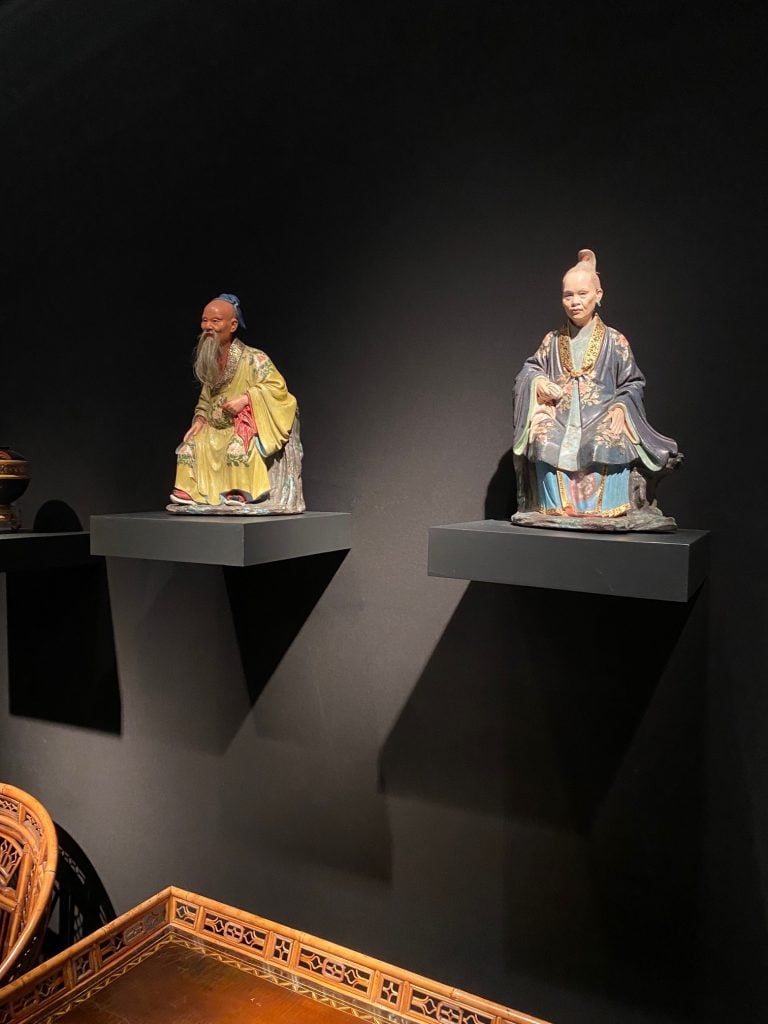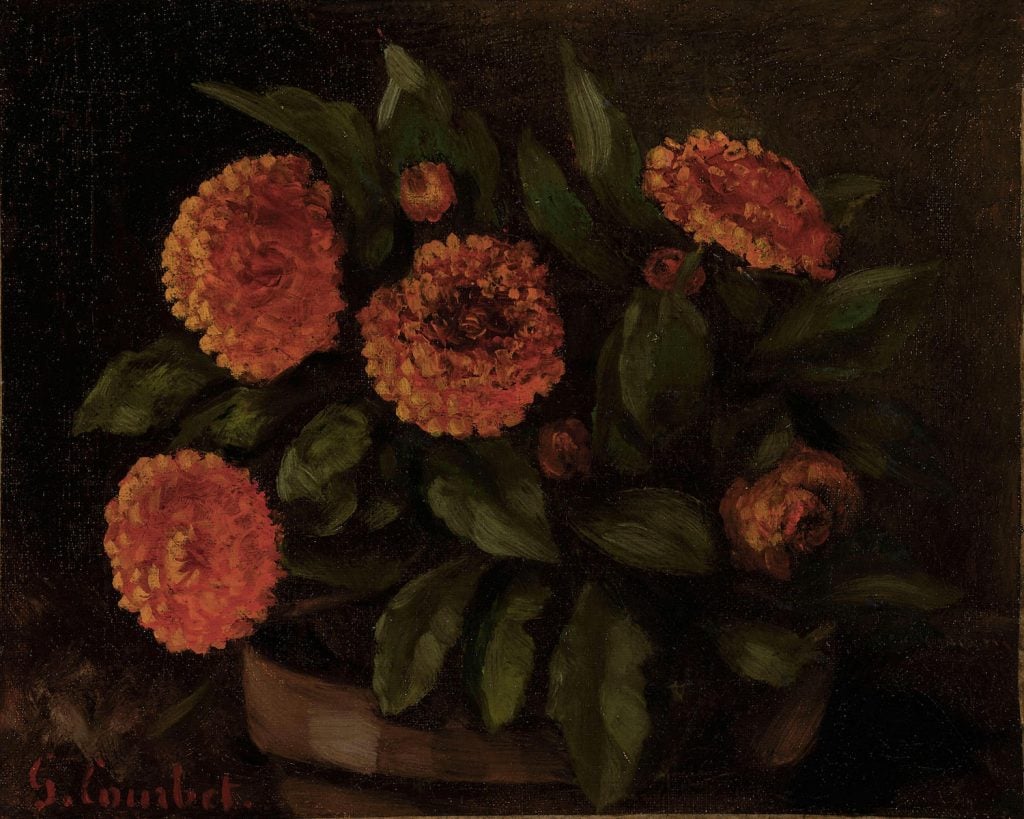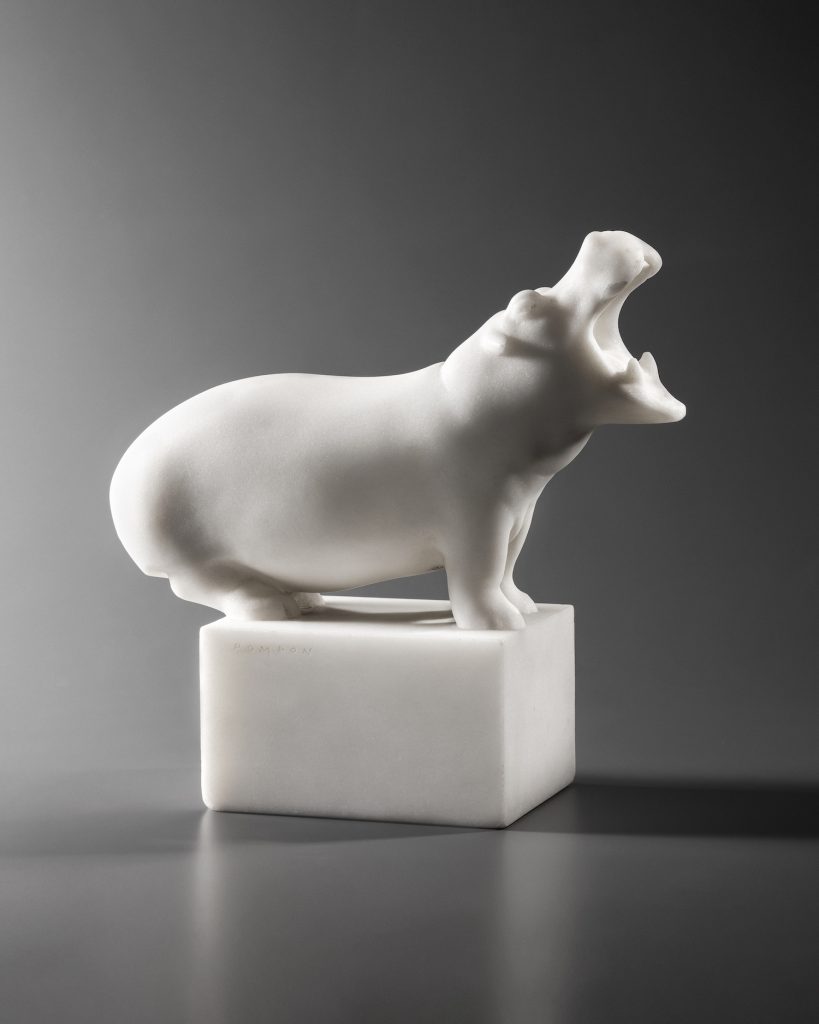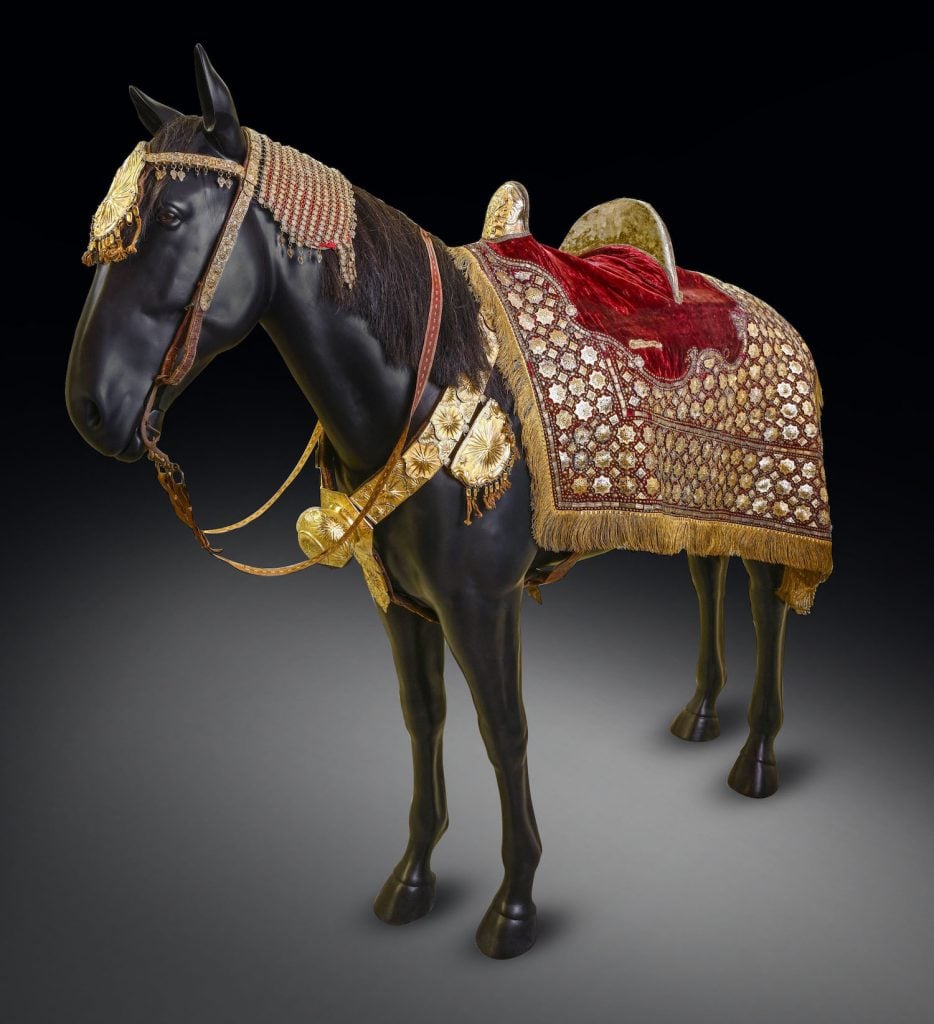Art Fairs
Here’s Our Pick of 5 Standout Works at TEFAF Maastricht, From a $1 Million Hippo Sculpture to a Rediscovered Dutch Masterpiece
The fair has made a triumphant return to its home city for the first time since the pandemic.

The fair has made a triumphant return to its home city for the first time since the pandemic.

Eileen Kinsella

TEFAF art fair has returned to Maastricht in the Netherlands after a hiatus of more than two years. The previous edition of the fair notably took place in March 2020 as countries around the world started going into lockdown one by one amid the early days of the Covid-19 pandemic. The fair was itself forced to shut down early as a result of the outbreak.
Now, amid broader reshuffles in the global art-fair calendar, TEFAF is back in its home location for the first time since the pandemic, albeit in a revised time slot from the usual March run (through June 30). The June dates certainly made for higher-than-usual temperatures in the halls of the Maastricht convention center. But aside from that, the crowds were back on the VIP preview days, the familiar extravagant floral displays were in full bloom, and the cocktails, canapés, and famous oysters were flowing.
The mood on opening day, June 24, was spirited and enthusiastic as dealers welcomed crowds of well-heeled buyers, who surveyed the plethora of offerings ranging from Old Masters, antiquities, jewelry, and porcelain, to Modern and contemporary art. A total of 242 exhibitors participated, including 21 first-time dealers, down somewhat from the last in-person edition that featured 280 exhibitors and 25 first-timers.
Some may be surprised to learn that the fair offers objects for as little as four figures. Artnet News scoured the aisles and found treasures ranging from €100,000 to over €2 million. Here are just a few of the highlights.

A pair of Chinese export “nodding head” figures. (Probably Canton, ca. 1780) at Thomas Coulborn & Sons at TEFAF Maastricht. Photo by Eileen Kinsella.
Booth: Thomas Coulborn & Sons, Sutton Coldfield, UK
What It Costs: €100,000
Why It’s Special: The gallery showcased Chinese export furniture and works of art under the banner “East Meets West,” noting how the fashion for chinoiserie or “Chinese taste” swept through Europe in the 18th century.
Chinese “nodding head” figures such as these were found in many royal palaces, notably in the Chinese Pavilion at Drottningholm Palace near Stockholm and the Royal Pavilion in Brighton in the UK, reflecting the passion of its owner, King George IV. The gallery even recreated some of the Brighton furniture displays in the booth. Chinese figures were such an integral part of the Royal Pavilion’s decoration that some “nodding head” figures are described as being “in the manner of the Brighton Pavilion,” said Jonathan Coulborn.
This pair of polychrome terracotta figures showing a mandarin and his female consort is even more rare for the fact that the figures are seated, Coulborn said. For instance, the UK’s Royal Collection has a painting by Johann Zoffany, ca. 1765, of Queen Charlotte at her dressing table. Queen Charlotte is pictured with the young Prince of Wales and Prince Frederick; in the background are two Chinese mandarin figures, similar to the mandarin figure of the pair above, although standing as opposed to seated.

Gustave Courbet, Les Soucis (1862). Image courtesy Stoppenbach & Delestre, London
Booth: Stoppenbach & Delestre, London
What It Costs: €300,000
Why It’s Special: This is one of a small group of floral still-lifes created by the French painter, who was most famous for his embrace of Realism and often controversial scenes of daily life that caused him to tussle with the Salon.
This particular work was painted during a stay in the Saintonge region near Bordeaux from May 1862 to April 1863, which Courbet called one of the most creatively enriching and productive periods in his life. Gallery director Adrien Delestre said Courbet’s flower paintings retained his Realist sensibilities while also having a poetic, almost melancholic undertone.
The Saintonge visit was prompted by an invitation to stay at the home of the collector Étienne Baudry, who Courbet had met through the critic Jules-Antoine Castagnary. Though Courbet only planned to stay for two weeks, the warm celebrity-like welcome he received encouraged him to stay much longer. The artist included the series of works in an exhibition held in the town of Saintes in 1863 and was aware of their popular appeal on the market. In a letter to a friend at the time, the artist conceded: “Flowers are making me a mint.”

François Pompon, Hippopotamus (1929). Image courtesy Xavier Eeeckhout, Paris
Booth: Xavier Eeckhout, Paris
What It Costs: €1 million
Why It’s Special: This diminutive sculpture of a hippopotamus, carved of pure Carrara marble, was given pride of place in a brilliantly lit “booth within a booth” at Paris dealer Xavier Eeckhout, and was also the perfect complement to several other animal sculptures nearby, including works by the famous duo Les Lalanne.
But the hippo has a unique story of its own. It was “ordered” by Anita Baron Supervielle in July 1929 from the Duchemin gallery in Paris and delivered to her in Argentina in January of the following year. The sculpture remained in the family until it was recently discovered by Eeckhout.
Pompon was said to be the most sought-after studio assistant in Paris at the end of the 19th century, hewing marble for Rodin and Camille Claudel until he “emancipated” himself in 1905 and abandoned the human figure in order to devote himself to animal art. Pompon was recognized much later in life, at age 67, when he presented his White Bear at the Salon d’Automne in 1922.
In this particular figure, which reflects the artist’s fascination with movement, “the roar of the hippopotamus propels it backward,” according to a press statement, an imbalance that is accentuated by “the position of the hindquarters in the void.”

Jan Lievens, Portrait of Admiral Maarten Harpertszoon Tromp (1653). Image courtesy Christopher Bishop Fine Art.
Booth: Christopher Bishop Fine Art, New York
What It Costs: €1.35 million
Why It’s Special: This discovery by a first-time exhibitor sent the entire fair abuzz on VIP preview day. First things first, the subject of the revered portrait is “Tromp,” with an “o.” When the New York dealer Christopher Bishop first saw the “drawing of a nobleman” in an online sale run by a small Massachusetts auction house, Marion Antique Auctions, he was immediately struck.
It was labeled as bearing the initials “I.L.” Upon closer examination, Bishop saw the initials read “J.L.” He knew it was a major work and worth much more than the $200 to 300 estimate. He expected he would have competition on the phone from Europe and he was right. “It looks like we underestimated this one,” the auctioneer said when the price hit $200,000. The gavel went down at $514,800 to an anonymous bidder, who is now known to be Bishop.
The Dutch Golden Age masterpiece depicts war hero Admiral Maarten Harpertszoon Tromp. The drawn portrait was lost since 1888, and was only known from later prints and painted versions.
Lievens was a contemporary and rival of Rembrandt, and is considered one of the great Dutch artists of the 17th century. This black chalk portrait of Admiral Tromp shows the naval hero within months of his death at the hands of a sniper in the rigging of an enemy English ship.
“When we looked at the drawing on the light table, the proof was there: the watermark is the same that you see in Rembrandt’s prints of the 1650s,” Bishop said in a statement, adding that Rembrandt and Lievens shared a studio earlier in their career and had the same paper supplier.
A watermark is “like the fingerprint of the papermaker and this watermark is special, as before 1650 it doesn’t exist, and after 1660 paper begins to change with the introduction of mechanization,” Bishop continued. “Because this is the same paper Rembrandt used for his prints, we know more about this paper than any other paper in history. We have absolute corroboration therefore of the date and monogram on the drawing.”

Ottoman Empire ceremonial saddlery. Image courtesy Kent Antiques London
Booth: Kent Antiques, London
What It Costs: €2 million
Why It’s Special: This massive and arresting ensemble was draped over a life-sized model of a horse in the booth of first-time exhibitor Kent Antiques. Director Mehmet Keskiner explained to Artnet News that the equestrian garniture was commissioned by the Ottoman Sultan Selim III and consists of a saddle, caparison, bridle, and trappings. It is the only 18th-century imperial Ottoman set of horse furnishings that has survived to this day, Keskiner said.
Six decades after it was commissioned, it was presented to Prince Albert via Queen Victoria by Sultan Abdülmecid I, as thanks for British support during the Congress of Paris in 1856.
In yet another fascinating turn, 30 years after that, Queen Victoria presented the saddlery to the Marquess of Lothian. It was kept at the family’s home in Newbattle Abbey, where it remained even after the house was donated to the nation of Scotland in 1930. That’s where Keskiner and Kent Antiques came in. When the garniture surfaced recently, it was worn and dirty from neglect but nearly a year of conservation and cleaning has restored the former historic treasure to its original glory.